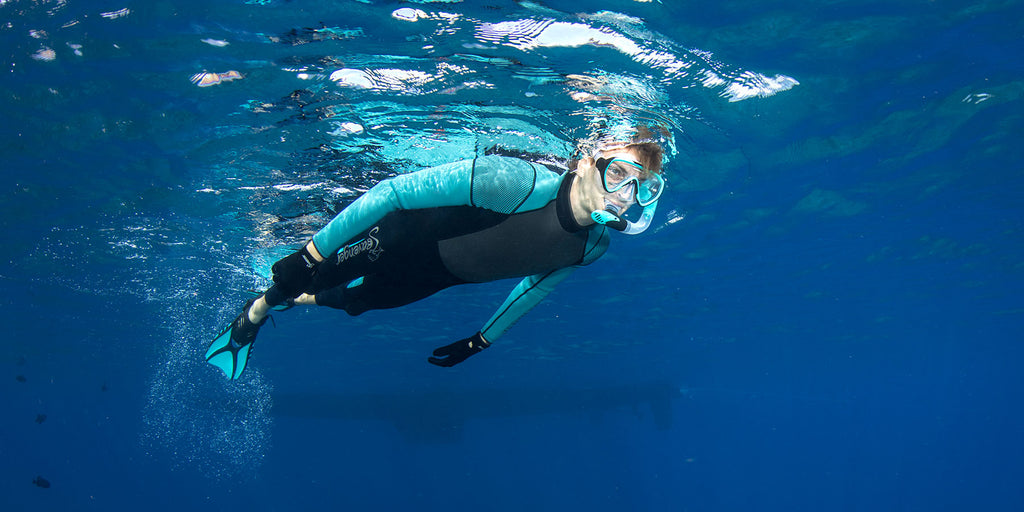How to Choose the Perfect Wetsuit

Wetsuits are a core piece of gear for any watersport. Whether you’re on the lake, at the beach or underwater, choosing the correct one can make or break your experience and play a major role in performance. But with so many types, how do you decide what’s best for you? We’ve put together a quick guide to help you choose a wetsuit that serves you in the best way.
Style
Wetsuits have a number of factors that influence how they can benefit you. Perhaps the most obvious of these factors is the style, or shape, of the suit.
The standard full wetsuit offers full coverage from ankle to wrist, which in turn offers the maximum amount of insulation. Depending on the thickness, they’re ideal for waters between 52 and 68 degrees Fahrenheit and are the most common style you’ll see for scuba divers.
Springsuits, also called shorties, offer thigh coverage and may have either short or long sleeves. These are commonly seen on surfers because they allow for a little more mobility but keep your core insulated. They’re ideal for waters between 58 and 68 degrees Fahrenheit.
Long John wetsuits, sometimes called Farmer John wetsuits, give full coverage from shoulder to ankle but leave your arms exposed. These are great for paddling or for wearing in conditions in which the air temperature is warm but the water is colder.
Hooded wetsuits offer the most coverage possible and are great for apnea diving or spearfishing. The hood minimizes drag for a streamlined effect while providing extra insulation to the head. Hooded suits are also ideal for cold-water scuba diving and can even be layered under dry suits if needed.
Thickness
After you’ve decided the style that works best for your sport and preference, thickness is the next most important factor. You can find wetsuits anywhere between 0.5 millimeters and roughly 7 mm, although many companies will customize wetsuits with even thicker materials. You’ll often see wetsuit thicknesses in a combination of two or three numbers: 3/2, 5/4/3. This simply refers to different thicknesses used throughout the wetsuit. For example, the arms may be 2 mm but the body is 3 mm to maximize mobility.
When deciding which thickness you need, consider the location, time of year and your personal tolerance levels. If you tend to get cold easily, you may want to opt for a slightly thicker wetsuit to compensate.
Material
While the vast majority of wetsuits are constructed of neoprene and lined with jersey, this factor is still extremely important if you have sensitive skin or would prefer to opt for something more environmentally-friendly. Natural rubber is the most commonly used material next to neoprene and offers an eco-friendlier option. However, neoprene still holds most of the market and you may need to do some extra digging if you’re looking for a non-neoprene wetsuit.
Function
While perhaps the least important of these four factors, function still plays a big role in driving your wetsuit selection. Suits that are designed for surfers may not work great for divers and vice versa. Sure, they’ll get the job done, but finding a suit that’s designed for the sport you need it for is going to optimize your performance even more.
For example, a good scuba diving wetsuit should have extra-durable material on the shoulders and chest area. Surfing wetsuits likely need more flexibility in the arms, so a diversified thickness is a good choice. With wetsuits being such a versatile product, it’s impossible to list every option here. But the most important thing is to do your research ahead of time, ask around for suggestions and in the end, choose a wetsuit that works best for you.
- Watersports Staff






Comments 0